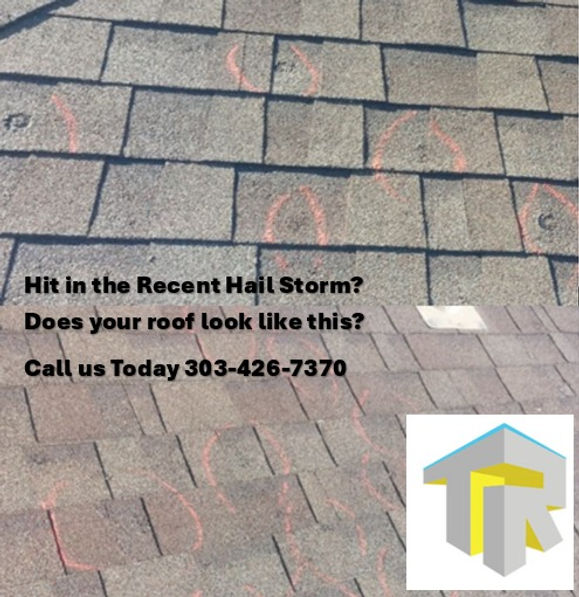
ROOFING SERVICE REPAIR QUOTES WITHIN 24 HOURS

HAIL

We have a referral program

The first thing you should know about faux slate roofing is that it's made from several different types of material. There's not one tried-and-true material that encompasses all faux slate roofing but rather several choices, each with their own characteristics.
-
Plastic/Polymer Composite
This material encompasses the products that are made from polymers and similar materials related to the plastics family. They're made as individual slate tiles with the exposed end molded with the ridges and riven look of real slate.
The Bottom Line
-
From a roofing contractor or builder’s standpoint, polymer roofs are an easy sell. They’re lighter and thus easier to handle and install than clay or slate. They require less maintenance and can last twice as long as cedar shakes. Also, polymer surfaces are smooth—with no granules to tumble into gutters, so they’re well suited for rainwater collection. RPM roofing (see link below) actually tested that assumption with good results.
-
Most polymer products have a Class 4 impact rating and Class A fire rating, with the exception of Global Hybrid’s “Old World Spanish” barrel tile, which has a Class C rating—because of its shape. Also, all of the products mentioned here have a 50 year or greater warranty, and most come in several colors, not to mention dozens of possible combinations.
-
With so many good features, why isn’t plastic roofing taking over the market? Simple. Most brands cost about three times that of asphalt shingles—pushing it over into the custom home/boutique category.
-
Unfortunately, people who are willing and able to pay three times as much for their new roof often are not the most environmentally minded. That means the roofing needs to look enough like the natural product it emulates-—slate, cedar shakes, or clay tile—to satisfy people with demanding visual tastes.
-
“One of the things that has given [plastic composites] a black eye in the past is poor installation,” he explains. “You’ll get several pallets on the jobsite with 80 or 90 bundles on a pallet. But you have to mix the colors from the different pallets, and really blend them. There’s an intentional shade difference between pallets. It’s part of what gives them a natural look.”
-
If the shingles aren’t mixed properly, he explains, the roof elevation will look blotchy, with large blocks of a single color. If all that mixing of products sounds time consuming, Depp says not to worry. “Once you get into a rhythm it’s pretty easy,” he says. “We’ve done it enough … we should know. You don’t need mathematical precision—the only time we actually count shingles is if it’s a special blend like Mountain Plum, where you have 10% of a different color.”
-
Not all synthetic roofing products require that extra step, however. For example, DaVinci Slate comes premixed with exact proportions of each shade within each bundle.
Optimizing the Details
-
With any durable roofing, the longevity of the product is only as strong as the underlayments and fasteners. A 100-year clay tile roof with a 30 lb. felt underlayment is unlikely to live out its potential. The same is true of plastic-based composites. Brands tend to vary on these details. EcoStar requires stainless steel fasteners. Other brands typically call for corrosion-resistant or galvanized fasteners. Some companies offer proprietary underlayments and venting systems.
-
Polymer products should only be applied over a clean deck, so that durability of all components is ensured. Synthetic roofing tends to weigh about the same as standard or architectural asphalt shingles.
Regional Advantages
-
Builder Curtis McLachlan has specified DaVinci’s “These products do a real good imitation of slate, and it’s long lasting, fireproof stuff. Also, up here in snow country, wood shingles and shakes are a fire hazard. They take a real beating because of the snow and ice buildup. I had used architectural (asphalt) composition shingles, and I like those because they hold the snow. Metal roofs don’t work up here unless it’s a small cabin because the snow tends to slide off and break things—rails and fences. That’s why the composites are a good fit. They’re 50/50—meaning they hold the snow for a while, then shed it. I tend to put a snow pull on so the owner can remove the snow and control it.”
-
. He puts an underlayment of ice and water shield over the whole deck. In the five years or so that he has been using the product, he says, he’s never had a shingle fail, fade significantly, or fall off the roof.
Faux Slate Roofing - A Variety Of Material Choices

-
Some Faux Slate Products Are Recylable
Besides being made from recycled materials there are synthetic slates that are recyclable as well. That means that leftover shingles and waste from a new roofing job or shingles that have expended their useful life can be recycled rather than thrown into a landfill. Manufacturers that offer these kinds of products clearly advertise this attribute so it's worth shopping around if this is an important feature for you.
Tiley Roofing has many different looks when it comes to Plastic Polymer



